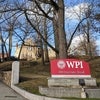A big stick
Back in the mid-1990s, when Worcester city officials were undertaking the Medical City Urban Renewal Project that eventually became the St. Vincent Hospital campus, the Worcester Redevelopment Authority identified 24.5 acres of downtown properties that needed to be assembled to fulfill their vision.
They figured it would take $11 million to buy out the various property owners. They figured wrong.
After several disputed eminent domain acquisition battles wound their way through the court system, the WRA, in the end, shelled out $31 million in acquisition costs. In a process that was highly flawed, there were many lessons to learn. Has the city learned them?In an effort to accelerate and manage the positive momentum of its multi-pronged downtown development, the city and its no longer moribund WRA is eyeing 118 acres and 24 properties for its new Urban Redevelopment Plan. The plan is to roll out over a rather extensive 20-year timeline. While city officials say they'll first try to coax building owners to invest in their own properties, the big stick of eminent domain is in the tool box. How long will it take for the city to find the funds, and will the planned $100 million in estimated acquisition costs turn into a figure several times the total? Clearly this is a different kind of plan, and there is no requirement to assemble a single, large urban campus, but to catalyze investment on a property-to-property, smaller scale level.
Getting the math wrong again on eminent domain acquisition costs would be a real nightmare.
Property owners, especially those that don't want to sell, will fight tooth and nail for all the money they can get. Any eminent domain acquisition efforts need to be managed in a much more accountable fashion – the city can't afford to get stuck with a big, budget-blowing bill.
While 24 properties have been earmarked for possible acquisition, the hope is that many of their owners will fall into line with the city's vision and find it a win-win to renovate or sell to another private developer who sees the opportunity in investing. WRA CEO Michael Traynor and City Manager Edward Augustus Jr. have said the important step here is to get the current property owners in line with the long-term goals.
At least one property owner – Joseph Donovan, vice president of Quincy real estate development firm MG2, which owns the Paris Cinema – said his company is moving forward with plans to demolish the run-down theater and put in 530 apartments and 60,000 square feet of retail on that parcel and the surrounding properties.
Utilizing the Redevelopment Authority's set of tools to spur new investment in key areas of the downtown is timely. The momentum from significant public and private development is palpable. New office space, housing, multiple hotel developments, college-campus expansions and a growing entertainment district all speak to the city's bright future. A strong vision for how different sections of the city will grow and develop is a positive sign for developers looking for a strong public partner. However, eminent domain feels like a tool of the past, when highways blazed a trail through urban neighborhoods and big brother ruled the day. Those days have been in the rearview mirror for some time now. Today, when the government seizes somebody's property, it feels un-American. Eminent domain should be surgically applied only to the top priority properties and not spread across the whole district as an active threat. Has the city picked the three to five most leveraged, underinvested properties where there is little evidence that the current owner will be the one to invest and renovate or expand? It would be more effective if that list were created and made public, and the first phase of the project had a more targeted focus.
For those who have spent several decades working or living in Worcester, feeling the stir of any long-promised momentum has been like waiting for Godot. However, today the momentum is real, the cranes are operating, the investments over many years are bearing fruit. The current plan by the city and WRA means our government is setting up to do its part to keep that momentum going. How well they manage that opportunity is still to be determined.
The mistakes of the past are clear, and navigating around those icebergs is an obvious priority. Carrying the big stick of eminent domain is potent but must be only used in a very targeted manner. While the Urban Redevelopment Plan may have a 20-year timetable, it should be broken down into smaller, achievable goals with the top priority parcels identified upfront. Accountability is important if public funds are to spur further private development, and the creation of a three-year plan with timetables and action steps will create important benchmarks.









0 Comments